Which organelle is in the picture below?
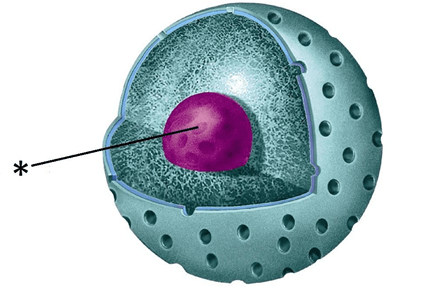
Nucleus
Which organelle is a jellylike fluid that contains building blocks for life, and is in all types of cells?
a. Ribosomes
b. Mitochondria
c. Lysosomes
d. Cytoplasm
D. Cytoplasm
This transport moves it molecules from an area of high concentration to an area of low concentration with no energy used.
Passive Transport
Diffusion of water through a cell membrane is called...
A. Mitosis
B. Osmosis
C. Endocytosis
D. Exocytosis
B. Osmosis
Which of the following DOES NOT expend energy?
A. Diffusion
B. Exocytosis
C. Active Transport
D. Sodium Potassium Pump
A. Diffusion
Which organelle is pictured below?
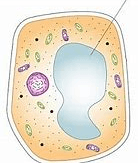
Vacuole
The organelle that has the most control over the cell’s functions
a. ribosome
b. mitochondrion
c. endoplasmic reticulum
d. nucleus
D. Nucleus
This transport is considered to be the opposite of diffusion because it moves molecules from an area of low concentration to an area of high concentration-against the concentrations gradient.
Active Transport
If a cell is placed in a solution and the movement of water is equal in and out of the cell. Also the cell's shape remains constant, What type of solutions is that?
Isotonic
In DIFFUSION molecules move from _______ concentration to _______ concentration.
HIGH concentration --> LOW concentration
Which organelle is in the picture below?
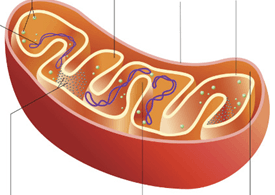
Mitochondria
The boundary formed between plant or animal cell and its environment, that regulates what goes in and out of the cell is called the
a. cytoplasm
b. cell wall
c. cell membrane
C. Cell Membrane
Diffusion, Facilitated Diffusion and Osmosis is which type of transport?
Passive Transport
In the picture below what type of solution is in figure C?

Isotonic
TRUE or FALSE: Facilitated diffusion requires the use of energy.
FALSE. Facilitated diffusion is a type of passive transport (requires NO ENERGY) where molecules move DOWN their concentration gradient.
Which organelle is in the picture below?
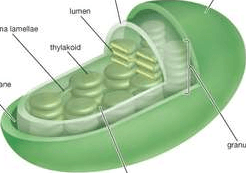
Chloroplast
Which organelles are involved in defending a cell against viruses?
a. centrosomes
b. lysosomes
c. vacuoles
d. chloroplasts
B. Lysosomes
Refer to the illustration below. The process taking place in the picture Y is
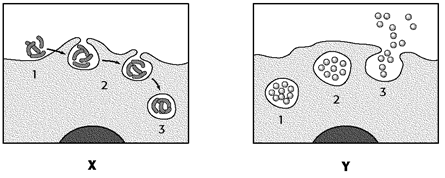 A. Endocytosis
A. Endocytosis
B. Exocytosis
C. Pinocytosis
D. Phagocytosis
B. Exocytosis
In the figure below what type of solution is in figure A?
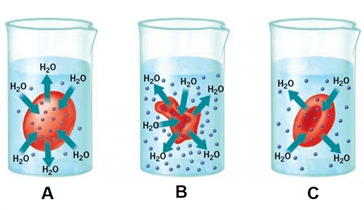
Hypotonic
Which of the following is true of facilitated diffusion?
A. It occurs when particles move from HIGH concentration to LOW concentration and REQUIRES transport proteins.
B. It occurs when particles move from LOW concentration to HIGH concentration and REQUIRES transport proteins.
C. It occurs when particles move from HIGH concentration to LOW concentration and DOES NOT REQUIRE transport proteins.
D. It occurs when particles move from LOW concentration to HIGH concentration and DOES NOT REQUIRE transport proteins.
A. It occurs when particles move from HIGH concentration to LOW concentration and REQUIRES transport proteins.
Which organelle is in the picture below?
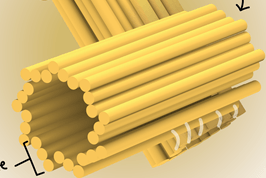 *Hint* only in animal cells
*Hint* only in animal cells
Centrioles
Mitochondria and chloroplasts are both sites of
a. energy conversion.
b. energy manufacturing.
c. photosynthesis.
d. protein synthesis.
A. Energy Conversion
What do we call the objects that surround the substance being moved in or out of the cell in pictures X and Y?
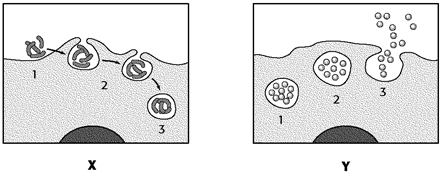 A. Vehicles
A. Vehicles
B. Pumps
C. Vesicles
D. Vessles
C. Vesicles
In the picture below what type of solution is in figure B?
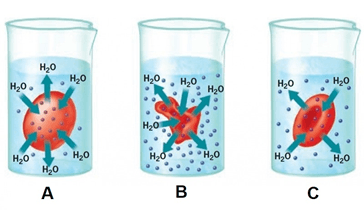
Hypertonic
How will the molecules in the illustration below move as a result of diffusion?
 A. Out of the cell
A. Out of the cell
B. into another cell
C. to the external environment
D. into the cell
D. Into the cell